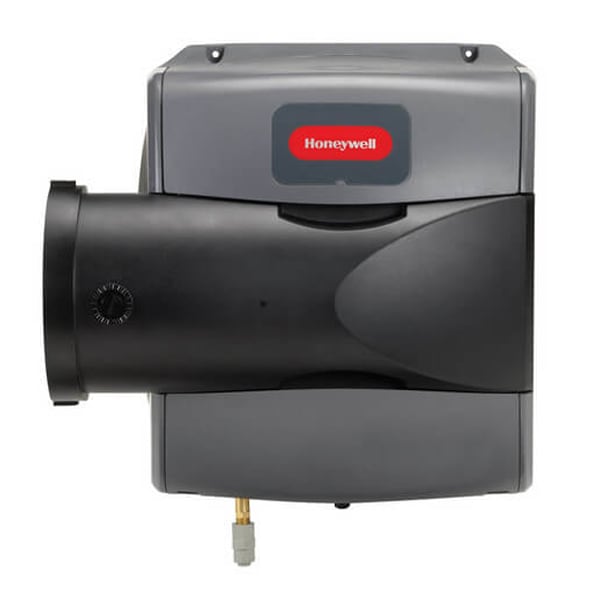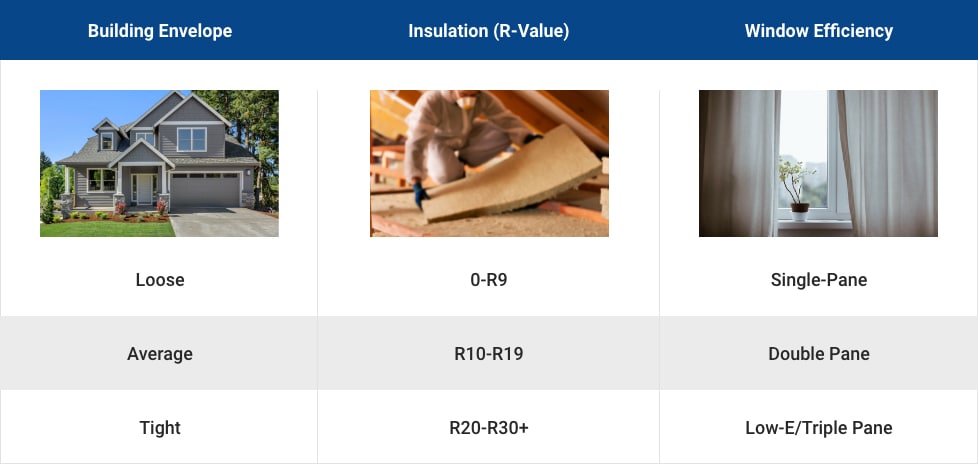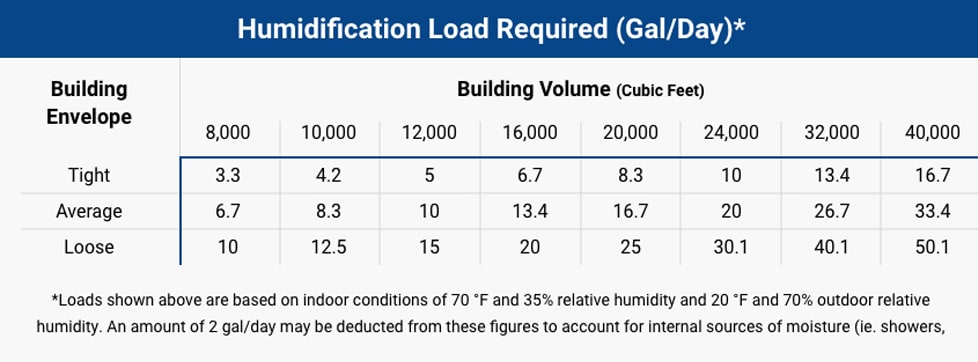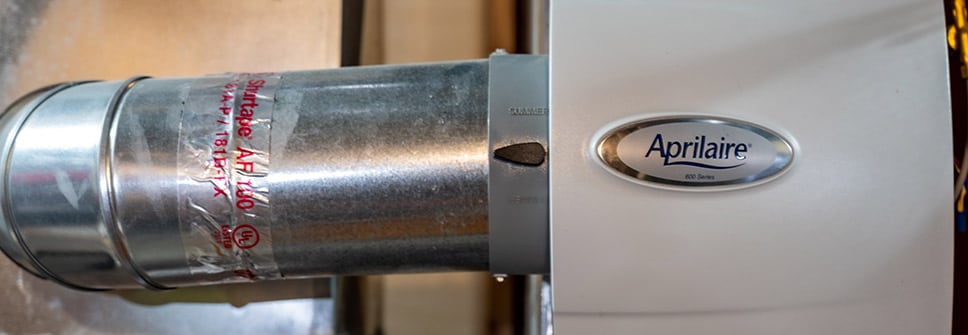Cracked lips. Itchy eyes. Nose bleeds. If you regularly experience these, then one possible cause is dry air. Our bodies need water, not only to drink but also to moisturize us.
Drying yourself out too much can cause discomfort and make you more susceptible to getting sick.
A humidifier adds water into your home’s air when there isn’t enough there naturally. Dry climates like the southwest simply lack moisture. In northern climates, homes get dried out during winter due to forced-air heating.
Humidifiers are controlled by a humidistat, which measures the amount of water vapor in the air. The recommended humidity level for homes is between 40%-60%. Anything below 40% humidity is considered dry and could damage floors, furniture, and your health. Studies have shown that viruses and bacteria can travel more easily in dry air and cause infection.*
Humidifiers have the potential to help with everything from dry skin to snoring by adding moisture to the air. Check out some of the possible health benefits of humidifiers below.

All humidifiers add water to the air, but there are various humidifier types that accomplish this differently.
Evaporative humidifiers work by moving air across a wet wick, drum, pad, or other media. As the air passes over the media, it causes the water to evaporate, which adds moisture to the air.
Steam humidifiers boil water into steam that is then injected into the air. They are much more efficient than evaporative models but use more power and are scalding hot.
Impeller humidifiers use rotating discs that splash water at a diffuser that breaks it into droplets and releases it into the air.
Ultrasonic humidifiers use a metal plate that vibrates ultrasonically. The ultrasonic vibrations break water into tiny vapor droplets that are then infused into the air.
Each humidifier type also produces either a warm or cool vapor. Typically, evaporative, impeller and ultrasonic humidifiers are considered cool mist because they don’t heat the water. Steam humidifiers boil water, so they are always considered warm mist.
Cool mist humidifiers are safer for children because they don’t boil the water, and they also use less power. The downside is that bacteria and other contaminants can thrive in this cooler water and be released into your home. As a result, they need to be cleaned often.
Warm mist humidifiers are more expensive to run and can cause burns if used inappropriately, but the boiling water kills most germs. The warm mist is also believed to be more soothing for breathing passages, especially if you’re sick.
 In the broadest sense, humidifiers can also be broken down into portable or whole-house types. As their name implies, portable humidifiers can be moved around the home and must be manually refilled with fresh water regularly. Some are small enough to rest on a nightstand while others need to be wheeled. Even the largest portable humidifiers can only moisturize one room at a time, however.
In the broadest sense, humidifiers can also be broken down into portable or whole-house types. As their name implies, portable humidifiers can be moved around the home and must be manually refilled with fresh water regularly. Some are small enough to rest on a nightstand while others need to be wheeled. Even the largest portable humidifiers can only moisturize one room at a time, however.
Whole-house humidifiers are installed directly into your home’s ductwork and add humidity to your entire house. They can either bypass furnace air into a separate duct, where it picks up moisture from a pad before flowing throughout your home or directly infuse hot steam into the air stream.
Water is automatically fed to whole-house humidifiers through a dedicated line, so you never have to manually refill the basin. Typically, either evaporative or steam-type humidifiers are used in whole-house applications.
TIP: Evaporative whole-house humidifiers need your furnace running in order to work. Steam whole-house humidifiers will work if your blower is running, even if your furnace isn’t. During the summer, you close the damper leading to the humidifier so that you’re not adding moisture to an already humid home!
If you are going the portable humidifier route, you will need to have at least one unit in every room you spend significant time in, such as your bedroom, living room, and kitchen. At a minimum, you should have a small one near your bed at night to help you breathe better while sleeping, especially if you have a cold or flu.
If you have chronic dryness problems in your home or need extra humidity for health reasons, then a whole-house humidifier is recommended. Sizing a whole-house humidifier requires two basic pieces of information:

When you figure out your cubic feet and building envelope, it’s time to determine what size humidifier you need, measured in gallons per day. Find the intersection cell of your home’s building volume and building envelope in the table below for an estimate of how many gallons per minute your humidifier should be.

Portable humidifiers don’t require any special installation. Just take them out of the box and read the owner’s manual. Whole-house humidifier types are far more complicated and require a professional installer, especially if bypassing ductwork.
Over time, mineral deposits from water and other contaminants will accumulate on your humidifier’s parts, and you don't want them getting in the air you breathe.
To clean portable humidifiers, follow these steps:
The above instructions will vary depending on your specific unit, so consult your owner’s manual for exact cleaning procedures. Try and clean your portable humidifier on a weekly or biweekly basis. If you use filtered or distilled water in your humidifier, you’ll need to clean less often because there will be fewer deposits.
Cleaning whole-house humidifiers: Evaporative whole-house humidifiers contain a removable water panel that should be taken out and cleaned at least twice per year according to the owner’s manual instructions. Experts also recommend replacing the panel on an annual basis for optimal performance. Similarly, steam whole-house humidifiers have a water canister that should be replaced annually.
As you can see, there are many different options for adding humidity to your home. Choosing the right humidifier comes down to your unique situation. Do you only need extra humidity in your child's room for when they catch a cold? Consider a cool-mist portable humidifier. Is your entire house always dry? A whole-house humidifier is for you.
If you're not sure what's best for you, please give us a call and explain your needs. Our knowledgeable representatives will steer you in the right direction. Just contact us for more information.
*For informational purposes. Not Medical Advice.
